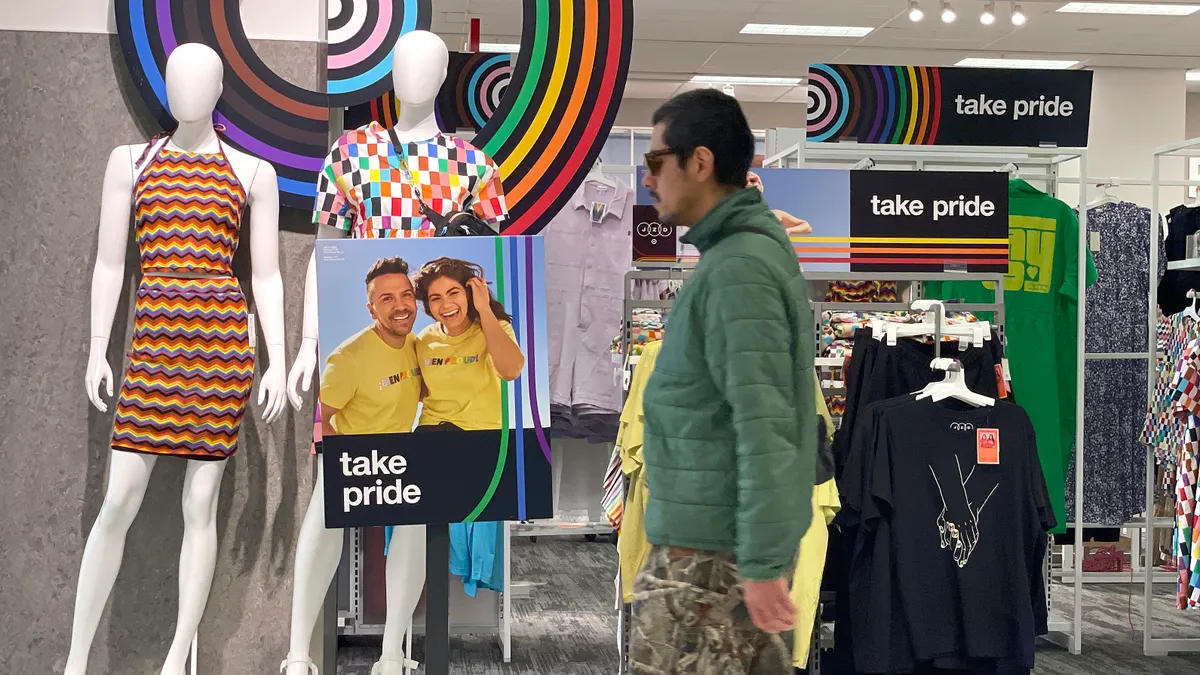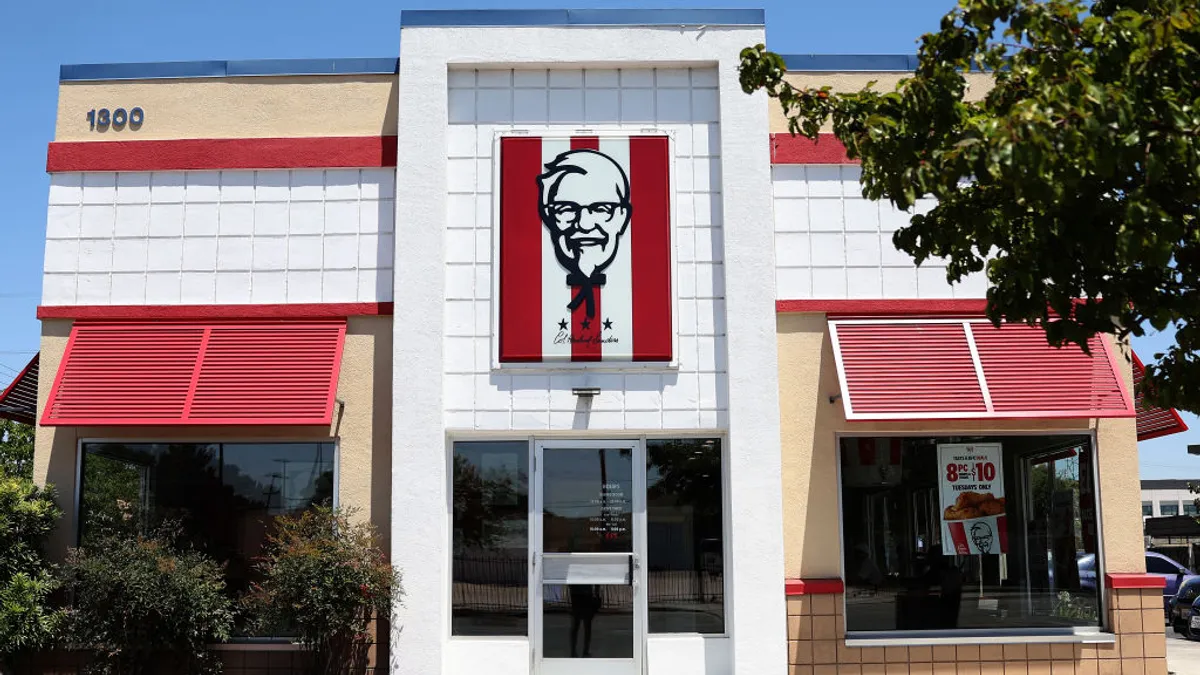As more business leaders recognize the value of customer experience, CX teams will experience more demand — and scrutiny.
CX leaders are expected to do more with limited resources, all while wrestling with stark challenges. CX leaders are navigating how to implement generative AI and enhance their loyalty programs while maintaining customer trust.
They’re negotiating how to provide customers a seamless checkout experience as well as balancing self-service technology and staff service.
Here are five trends CX Dive will track in 2024.
CX teams are spread too thin.
CX budgets aren’t growing at a fast enough rate to keep up with CX teams’ growing responsibilities.
Just over half of CX decision-makers expect their budget to remain the same or grow in 2024, and most don’t expect it to grow a lot, according to Forrester. Just over half of those who expect their budgets to grow only forecast a 1% to 4% increase.
“Couple that with the relatively modest budgets of many CX teams ... and it’s definitely not keeping pace with inflation,” Judy Weader, a principal analyst at Forrester, told CX Dive in an email.
The disconnect between budget and tasks means CX teams are spread too thin and may have to turn away work. Forrester predicts that 2 in 5 CX teams will turn down work in 2024.
If their work isn’t farmed out to an outside firm or to employees on other teams, it won’t get done at all, the analyst firm says.
While the increased focus on CX is a good thing, with CX leaders moving up the C-suite hierarchy, businesses need to fund the work if they expect good work.
“In a sense, they’re victims of their own success: More firms’ leaders are starting to see the business benefits of improving customer experience, and that creates increased demand for data, journey mapping, experience design, and other bread-and-butter CX activities,” Weader said. “But these leaders may also see CX as something scrappy, that if it’s been done off the side of someone’s desk before, they can do it again for the next project.”
Weader encourages CX teams to attack this problem from multiple angles:
- Create a robust prioritization approach.
- Build a bigger support system within the organization by evangelizing CX benefits.
- Communicate how investing in better CX bolsters their business’s bottom line.
Trust issues will impede the rollout of generative AI.
Generative AI has been grabbing headlines for the past year and with good reason. The technology can power better call center interactions and enable deeper dives into customer data than ever before, and organizations are exploring its potential to tackle complex CX problems.
However, for all the talk about generative AI, CX leaders face significant headwinds in its implementation.
A summer 2023 survey by Deloitte found that 4 in 5 CX leaders believe some form of AI — generative AI, machine learning or a related tool — will have a great impact on overall experiences in the coming year, according to Amelia Dunlop, chief experience officer at Deloitte Digital. But only a quarter selected the integration of AI technologies as a priority in the near term.
While Deloitte didn’t ask CX leaders for specific reasons why integrating AI wasn’t a priority, one important question is whether the technology can truly replicate human experiences.
"I think that some of those reasons [for delayed adoption] will come down to concerns around trust,” Dunlop said in a call with CX Dive. “To what extent can we trust that the experiences that are going to be delivered by AI are authentic and robust?"
Consumers are concerned about the use of AI. Dunlop said that a yet-to-be-released Deloitte survey found that consumer trust in a brand drops 144%, from a net positive to a net negative, when a customer believes a company is using AI.
Overcoming consumers’ mistrust will be essential for leaders wanting to roll out generative AI on a larger scale. Dunlop believes building trust with customers will require leaders to keep people top of mind as they discover new use cases for the technology.
“What are the human problems we're solving for?” she said. “How do we make sure that human lives are made better by the possibilities of these technologies and we are not just pursuing use cases for their own sake?”
Loyalty will get personal while maintaining trust.
The future of loyalty lies in personalization. Shoppers want relevant benefits from loyalty programs, not one-size-fits all rewards.
Some companies are already acting on this, such as Cava adding a greater variety of rewards for customers to choose from.
Greater personalization can be fueled by AI, which has the potential to help companies build long-term relationships with customers by enabling the more personal experiences they seek, according to Julie Geller, principal research director at Info-Tech Research Group’s SoftwareReviews division.
“AI will help practitioners consider how each aspect of the customer experience can be optimized for not just acquisition but also retention, expansion and advocacy,” Geller said in an email to CX Dive. “Generative AI has the potential to significantly enhance personalized interactions and tackle instant problem-solving — think tailored loyalty programs, for example.”
However, CX leaders will need to be careful about how they go about enhancing the personalization of their loyalty programs as well as personalization in general. Deloitte’s Dunlop believes that the future of loyalty will be about trust, and balancing offering relevant, personalized offers against consumer privacy will be essential.
Leah Leachman, senior director analyst in Gartner’s marketing practice, noted that many consumers are comfortable sharing information about product history, basic demographics and online media consumption history but are leery about companies using their browsing histories or household data.
Businesses need to continuously and proactively understand customers’ expectations around privacy and be empathetic to their preferences, Leachman said in an email to CX Dive “Even though data collection is commonplace, customers have limited comfort with sharing certain types of personal data.”
Modern convenience will have tech — and humans — requirements.
Expectations for seamless experiences will continue to rise in 2024. Consumers expect a great experience no matter how or where they choose to interact with a company during their customer journey.
“In the coming year, customers will expect brands to provide frictionless experiences across all touchpoints, from browsing to purchasing and post-purchase support,” said George Korizis, PwC’s U.S. customer transformation leader. “This will require brands to invest in technologies that enable seamless integration of their online and offline channels, as well as prioritize customer-centric strategies to deliver exceptional experiences at every step.”
The sheer breadth of interactions means that there is no one-size-fits all technology to enable seamless experiences. Companies have any number of areas they can focus on, from increasing transparency and communication around deliveries to enabling convenient self-service inquiries.
However, businesses shouldn’t forget the role workers play in delivering convenience. Nearly 9 in 10 customer service journeys that begin with self-service go through multiple channels, according to a Gartner survey. Common secondary channels include phone, live chat and email.
The importance of people isn’t limited to the call center. Staff, from store associates who are great at wayfinding to baristas who know the regulars’ favorite orders, play important role in delivering convenient and enjoyable experiences.
“Companies must advance not just technology but also the human touch — enhancing the process of replaying information from resources and the problem-solving abilities of customer service teams,” Info-Tech’s Geller said. “For a seamless customer experience, it’s about striking the right balance, allocating resources where they’re most effective, and predicting future needs, all within a cohesive operational framework.”
Consumers want payment options. Businesses are obliging.
Businesses are adopting more embedded payment options — from buy now, pay later to digital wallets — to ensure a smooth checkout experience.
The demand for flexible payment options is massive. Consumers spent $75 billion online via buy now, pay later payment platforms in 2023, a 14.3% jump from 2022, according to research from Adobe Analytics.
Meanwhile, the value of digital wallet tap-to-pay transactions is expected to increase to $203 billion in 2024 and grow by 150% by 2028, according to the Consumer Financial Protection Bureau, citing Juniper Research.
As consumers' payment demands change, businesses are keen to provide options to prevent friction in the checkout process.
“We have lots of research to expose the idea that the customers want to pay the way they want to pay, and they will often leave if they can't pay the way they wanted to,” Aaron Press, research director of worldwide payments at IDC, told CX Dive. “And even if it's only a small number of consumers — it’s 5% of consumers who prefer this method of payment [who] will leave if you don't have it. Right, that's 5% fewer customers in your addressable market if you don't have that method of payment.”
A savvy merchant, he said, ought to have a broad selection of payment options for consumers.
In an effort to remain competitive, nearly three-quarters of marketplaces have enabled embedded digital payment options, with more payment providers looking to follow suit, according to a recent survey.
“For any merchant, capturing that first transaction from a customer is really important. You can't get to lifetime customer value if you don't have that first transaction,” he said. “So having a lot of different options to sort of capture that first transaction from a customer is really important. And then you can build the relationship with them.”






















